 Dirk’s
Comments
(group member since Feb 02, 2022)
Dirk’s
Comments
(group member since Feb 02, 2022)
Dirk’s
comments
from the Art Lovers part 3 group.
Showing 121-140 of 1,404
 Worthington Whittredge
Worthington Whittredge(1820–1910 )
Thomas Worthington Whittredge was an American artist of the Hudson River School. Whittredge was a highly regarded artist of his time, and was friends with several leading Hudson River School artists including Albert Bierstadt and Sanford Robinson Gifford. He traveled widely and excelled at landscape painting, many examples of which are now in major museums. He served as president of the National Academy of Design from 1874 to 1875 and was a member of the selection committees for the 1876 Philadelphia Centennial Exposition and the 1878 Paris Exposition, both important venues for artists of the day.
https://en.wikipedia.org/wiki/Worthin...
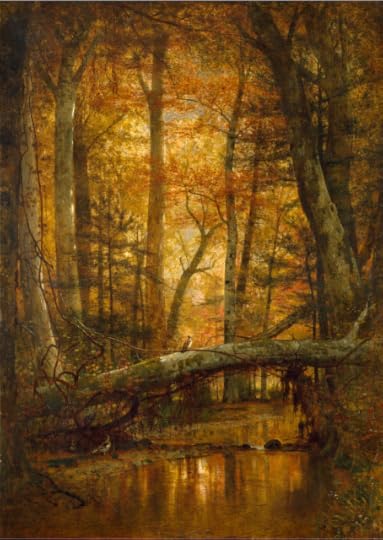
The Woods of Ashokan
1886
Oil on canvas
144.8 x 102.9 cm
Chrysler Museum of Art, Norfolk, United States
https://chrysler.emuseum.com/objects/...
 Kunimaru Utagawa (国丸) Also signed Bunji (文治)
Kunimaru Utagawa (国丸) Also signed Bunji (文治)(1793–1829)
Kunimaru Utagawa was an ukiyo-e artist in the mid-Edo period. His real surname was Maeda, commonly known as Bunji. He was also known as Iseya Ihachi. He used the surname of an artist of Utagawa, and was known by the names Ichiensai, Gosairou, Keiuntei, Saikarou, and Hanchoan. His original artist name was Bunji. He was born in Edo, and his father ran a pawnshop in Honmachi. Details about him are unknown, except that he was a pupil of the first Utagawa Toyokuni and Tagawa Hourou.
https://ja.wikipedia.org/wiki/歌川国丸
According to the encyclopedia of Ukiyo-e in the late 1980s, the Utagawa school had 151 students, 147 workers from Kuniyoshi, and 173 people from Kuniyoshi. Students who studied at the Utagawa school would gain the chance to receive the Utagawa name if their skill is approved. The master would give out the Utagawa surname, and the use of “Toshinomaru”, which is Utagawa's own family crest that is only found within the Utagawa family to the best students.
The “Yearball”, rounded design, was the symbol of the Utagawa family. This symbol was easy to recognize, so the people who wore the Utagawa crested kimono did not need the ticket to the Edo theater at that time. The “Tatsunori no Maru” crest of the same shape with an added line, was used only by the master of Muneya and his workers. The next master was decided at a convention of the very large Utagawa Ichimon family. The master was mainly decided by personality and their Ukiyo-e skills. However, the higher the rank, the better chance that they would be chosen. There were gifts such as crests from the shogunate in the house using this family crest. Utagawa Kazumon did not only pay attention to the aesthetic of the picture, but also tried to maintain a close relationship with the masses, calling himself “painter”.
https://en.wikipedia.org/wiki/Utagawa...
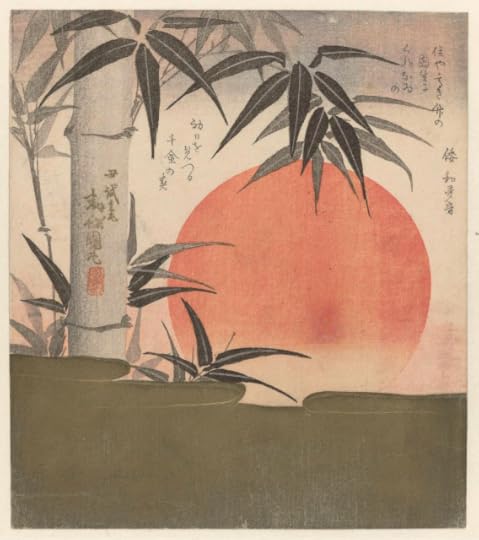
Bamboo and rising sun (surimono) 1812-1834
Color woodblock print; shikishiban, surimono
22 x 19.7 cm
Among others:
Art Institute of Chicago
https://www.artic.edu/artworks/86741/...
Rijksmuseum, Amsterdam
https://www.rijksmuseum.nl/nl/collect...
A surimono is a luxurious print on which an image is combined with one or more poems. When printing a surimono, thicker paper, blind printing and metal pigments, such as copper and silver powder, were often used. The prints were often commissioned by poets and given as an exclusive gift to friends and relations.
 Wassily Kandinsky
Wassily Kandinsky(1866 - 1944)
Wassily Wassilyevich Kandinsky was a Russian painter and art theorist. Kandinsky is generally credited as one of the pioneers of abstraction in western art. Born in Moscow, he spent his childhood in Odessa, where he graduated from Odessa Art School. He enrolled at the University of Moscow, studying law and economics. Successful in his profession, he was offered a professorship (chair of Roman Law) at the University of Dorpat (today Tartu, Estonia). Kandinsky began painting studies (life-drawing, sketching and anatomy) at the age of 30.
https://en.wikipedia.org/wiki/Wassily...
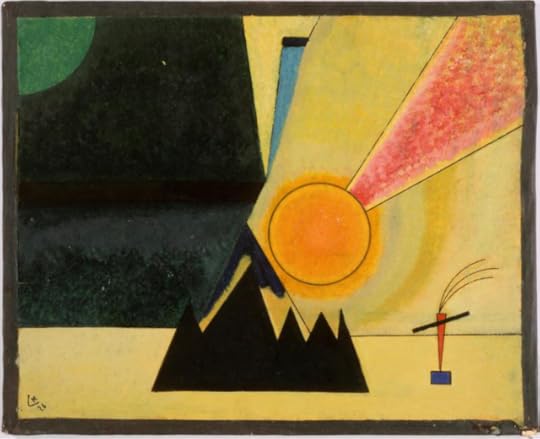
Développement
1926
Oil paint on card board
32 x 40
Musée National d'Art Moderne, Paris
 Amos Nattini
Amos Nattini(1892 - 1985)
Amos Nattini was an Italian painter, famous for having illustrated the Divine Comedy.
https://it.wikipedia.org/wiki/Amos_Na...

Purgatorio Canto XIX
1939
Lithography
81.9 x 65.6 cm
Collezione Fondazione Cariparma, Parma, Italy
It was to celebrate the 6th anniversary of Dante's death that in 1920 the project for a monumental edition of Dante's work came to life, financed by the lawyer Rino Valdamieri, together with other private investors. Amos Nattini executed the edition: he worked on the illustrations, the typographic aspects, the creation of the characters and the technical aspects. He therefore made 100 watercolors, one for each canticle, which were subsequently lithographed. 1000 copies were printed in hand-made rag paper 140x100 cm with leather cover of white calf. It took 20 years and 7 months to complete the artwork.
 Maurits Frederik Hendrik de Haas
Maurits Frederik Hendrik de Haas(1832 - 1895)
Maurits Frederik Hendrik de Haas was a Dutch-American marine painter. Born in Rotterdam, Netherlands, he studied art at the Rotterdam Academy and at The Hague, under Johannes Bosboom and Louis Meyer, and in 1851-1852 in London, following the English watercolourists of the day. In 1857 he received an artist's commission in the Dutch Navy, but in 1859, under the patronage of August Belmont, who had recently been minister of the United States at The Hague, he resigned and moved to New York City.
https://en.wikipedia.org/wiki/Mauritz...
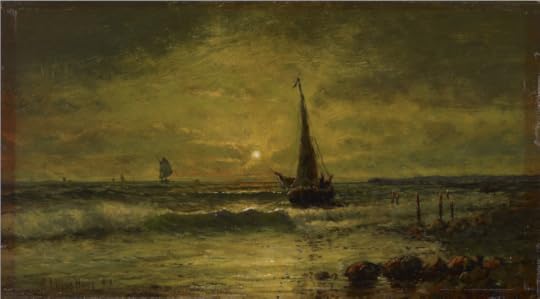
Coastal Scene
19th century
Oil on panel
25.4 x 38.1 cm
The Walters Art Museum, Baltimore, United States
https://art.thewalters.org/object/37....
 Georgia O'Keeffe
Georgia O'Keeffe(1887– 1986)
Georgia Totto O'Keeffe was an American modernist painter and draftswoman whose career spanned seven decades and whose work remained largely independent of major art movements. Called the "Mother of American modernism", O'Keeffe gained international recognition for her paintings of natural forms, particularly flowers and desert-inspired landscapes, which were often drawn from and related to places and environments in which she lived.
https://en.wikipedia.org/wiki/Georgia...
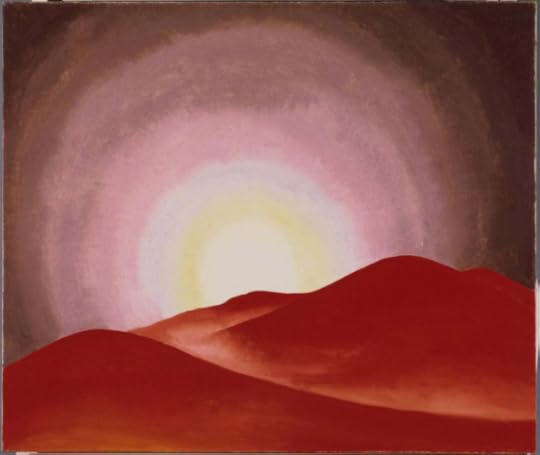
Red Hills, Lake George
1927
Oil on canvas
71.75 x 84.77 cm
The Phillips Collection, Washington, DC
https://www.phillipscollection.org/co...
With its brilliant color, dramatic luminosity, and simplified forms, Red Hills, Lake George typifies the distinctive approach to landscape painting Georgia O’Keeffe, as well as other artists that were part of Alfred Stieglitz’s circle. Within her oeuvre, this is a transitional work, presaging the stark drama of her later New Mexico landscapes, while also paying homage to her earlier experiences out west and at Lake George.
 Tarsila do Amaral
Tarsila do Amaral(1886 - 1973)
Tarsila de Aguiar do Amara was a Brazilian painter, draftswoman, and translator. She is considered one of the leading Latin American modernist artists, and is regarded as the painter who best achieved Brazilian aspirations for nationalistic expression in a modern style. As a member of the Grupo dos Cinco, Tarsila is also considered a major influence in the modern art movement in Brazil, alongside Anita Malfatti, Menotti Del Picchia, Mário de Andrade, and Oswald de Andrade. She was instrumental in the formation of the aesthetic movement, Antropofagia (1928–1929); in fact, Tarsila was the one with her celebrated painting, Abaporu, who inspired Oswald de Andrade's famous Manifesto Antropófago.
https://en.wikipedia.org/wiki/Tarsila...
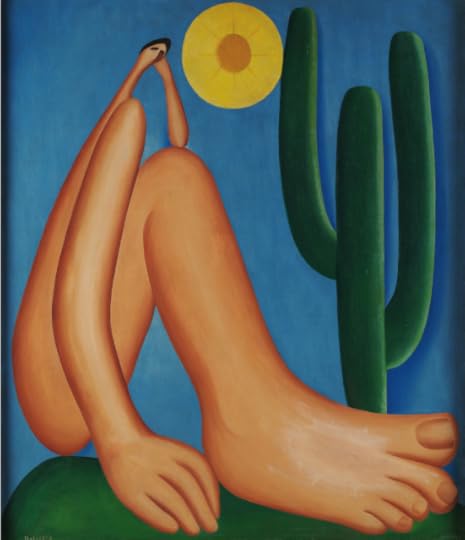
Abaporu
1928
Oil on canvas
85 x 72.8 cm
Latin American Art Museum of Buenos Aires (MALBA)
https://coleccion.malba.org.ar/abaporu/
Abaporu (from Tupi language "abapor’u", abá (man) + poro (people) + ’u (to eat), lit. 'the man that eats people') is an oil painting on canvas by Brazilian painter Tarsila do Amaral. It was painted as a birthday gift to writer Oswald de Andrade, who was her husband at the time.
https://en.wikipedia.org/wiki/Abaporu
 Vincent Van Gogh
Vincent Van Gogh(1853 - 1890)
Vincent Willem van Gogh was a Dutch Post-Impressionist painter who is among the most famous and influential figures in the history of Western art. In just over a decade, he created approximately 2,100 artworks, including around 860 oil paintings, most of them in the last two years of his life. His oeuvre includes landscapes, still lifes, portraits, and self-portraits, most of which are characterised by bold colours and dramatic brushwork that contributed to the rise of expressionism in modern art. Van Gogh's work was only beginning to gain critical attention before he died from a self-inflicted gunshot at age 37. During his lifetime, only one of Van Gogh's paintings, The Red Vineyard, was sold.
https://en.wikipedia.org/wiki/Vincent...

Wheat Field with Reaper and Sun
1889
Oil on canvas
73 × 92 cm
Kröller-Müller Museum
Reaper (French: faucheur, lit. 'reaper'), Wheat Field with Reaper, or Wheat Field with Reaper and Sun is the title given to each of a series of three oil-on-canvas paintings by Vincent van Gogh of a man reaping a wheat field under a bright early-morning sun. To the artist, the reaper represented death and "humanity would be the wheat being reaped". However, Van Gogh did not consider the work to be sad but "almost smiling" and taking "place in broad daylight with a sun that floods everything with a light of fine gold".
https://en.wikipedia.org/wiki/Reaper_...
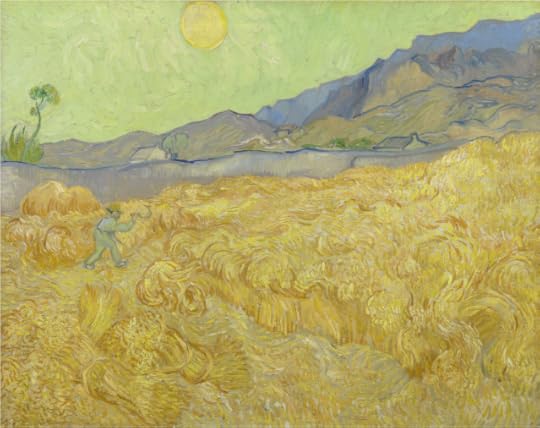
The Reaper in Van Gogh Museum, Amsterdam, Netherlands
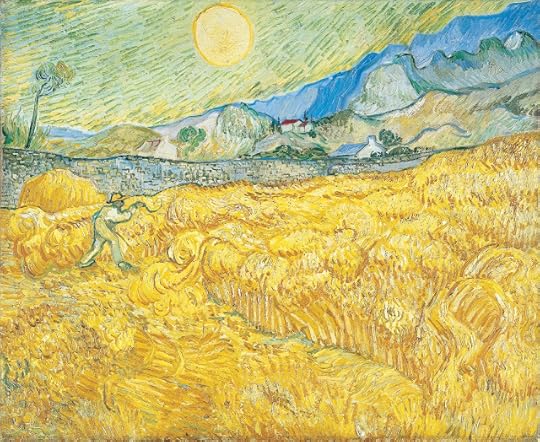
The Reaper in Museum Folkwang, Essen, Germany
 Karl Friedrich Schinkel
Karl Friedrich Schinkel(1781 - 1841)
Karl Friedrich Schinkel was a Prussian architect, city planner and painter who also designed furniture and stage sets. Schinkel was one of the most prominent architects of Germany and designed both Neoclassical and neo-Gothic buildings. His most famous buildings are found in and around Berlin. Schinkel's Bauakademie is considered one of the forerunners of modern architecture.
https://en.wikipedia.org/wiki/Karl_Fr...
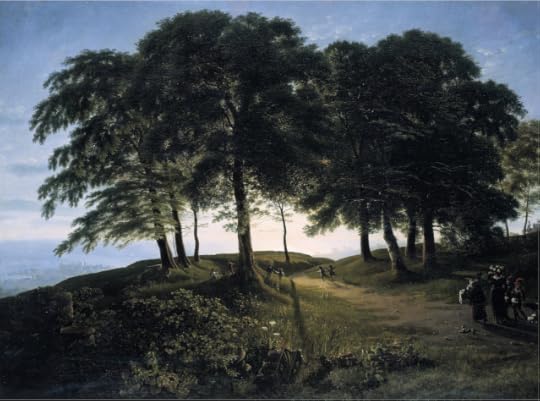
Morning
1813
Oil on canvas
102 x 76 cm
Nationalgalerie, Staatliche Museen zu Berlin
https://recherche.smb.museum/detail/9...
 Joaquín Sorolla
Joaquín Sorolla(1863 - 1923)
Joaquín Sorolla y Bastida was a Spanish painter. Sorolla excelled in the painting of portraits, landscapes, and monumental works of social and historical themes. His most typical works are characterized by a dexterous representation of the people and landscape under the bright sunlight of Spain and sunlit water.
https://en.wikipedia.org/wiki/Joaquín...
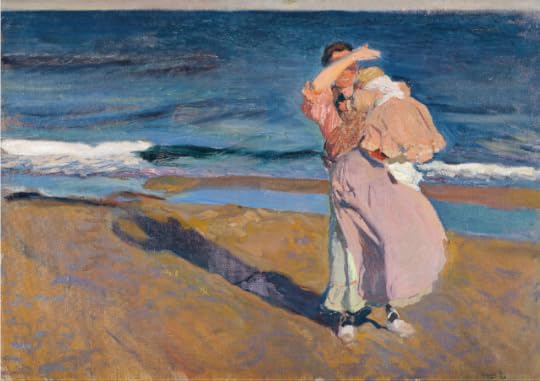
Fisherwomen with her son
1908
Oil on canvas
90.5 x 128.5 cm
Sorolla Museum, Madrid, Spain
https://ceres.mcu.es/pages/Main?idt=5...
 Every month I choose a theme and try to post as many different artists as there are days.
Every month I choose a theme and try to post as many different artists as there are days.I won’t reveal the theme right away—so for the first few days, you’re invited to play along and try to guess it. I have a feeling this one might shine through pretty quickly though.
You’re welcome to comment on the pictures, respond to other people’s comments, or say whatever you like (as long as it follows the group rules, of course).
There’s just one rule for this thread: only the person running it can post pictures.
So please don’t post a picture here. That’s all!
Enjoy—and don’t forget your (imaginary) sunscreen!
 Claude Raguet Hirst
Claude Raguet Hirst1855- 1942)
Claude Raguet Hirst was an American painter of still lifes. She was the only woman of her era to gain acclaim using the trompe-l'œil ("fool the eye") technique.
https://en.wikipedia.org/wiki/Claude_...
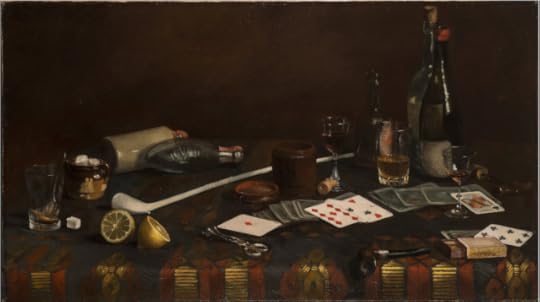
A Gentleman’s Table
After 1890
Oil on canvas
45.7 x 81.3 cm
NMWA, National Museum of Women in the Arts
https://nmwa.org/art/collection/gentl...
Commissioned for a Chicago men’s club, Claude Raguet Hirst’s A Gentleman’s Table subtly critiques masculine pastimes while still appealing to male patrons. The work’s hyperrealistic style exemplifies a traditional technique called trompe l’oeil, French for “deceives the eye.” At the time, trompe l’oeil works were typically painted by and for men. Hirst claimed the method as her own and refashioned it with messages appealing to female viewers. Her skill rendering tight contours, tonal values, reflections, and textures resulted in successful illusionistic images.
 Georges de La Tour
Georges de La Tour(1593 - 1652)
Georges de La Tour was a French Baroque painter, who spent most of his working life in the Duchy of Lorraine, which was temporarily absorbed into France between 1641 and 1648. He painted mostly religious chiaroscuro scenes lit by candlelight.
https://en.wikipedia.org/wiki/Georges...
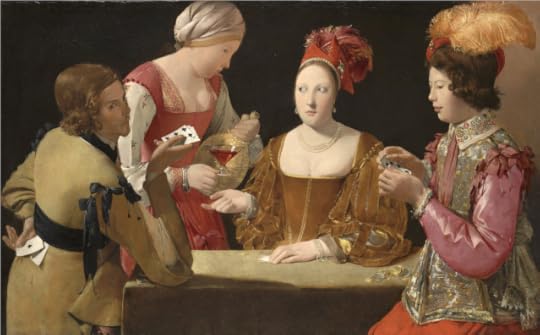
The Cheat with the Ace of Clubs
C. 1630-34
Oil on canvas
124.5 x 182.9 cm
Kimbell Art Museum, Fort Worth, Texas
https://kimbellart.org/collection/ap-...
One of the greatest masterpieces of seventeenth-century French art, Georges de La Tour’s Cheat with the Ace of Clubs takes as its subject the danger of indulgence in wine, women, and gambling. While the theme harks back to Caravaggio’s influential Cardsharps, also in the Kimbell, the roots of this engaging morality play can be traced to earlier representations of the biblical subject of the prodigal son.
 Francesc Domingo Segura
Francesc Domingo Segura(1893 - 1974)
Francesc Domingo i Segura was a Catalan painter and engraver, linked to the second generation of Noucentisme
https://ca.wikipedia.org/wiki/Frances...
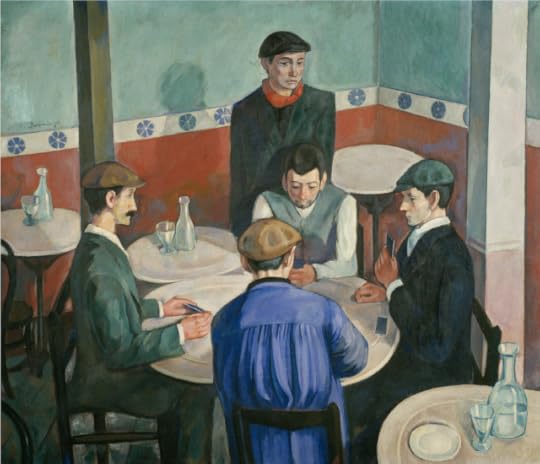
The Gamblers
Oil on canvas
150 x 132 cm
Museu Nacional d'Art de Catalunya - MNAC, Barcelona
https://www.museunacional.cat/en/adva...
 Salvator Rosa
Salvator Rosa(1615 - 1673)
Salvator Rosa is best known today as an Italian Baroque painter, whose romanticized landscapes and history paintings, often set in dark and untamed nature, exerted considerable influence from the 17th century into the early 19th century. In his lifetime he was among the most famous painters, known for his flamboyant personality, and regarded as an accomplished poet, satirist, actor, musician, and printmaker, as well. He was active in Naples, Rome, and Florence, where on occasion he was compelled to move between cities, as his caustic satire earned him enemies in the artistic and intellectual circles of the day.
https://en.wikipedia.org/wiki/Salvato...
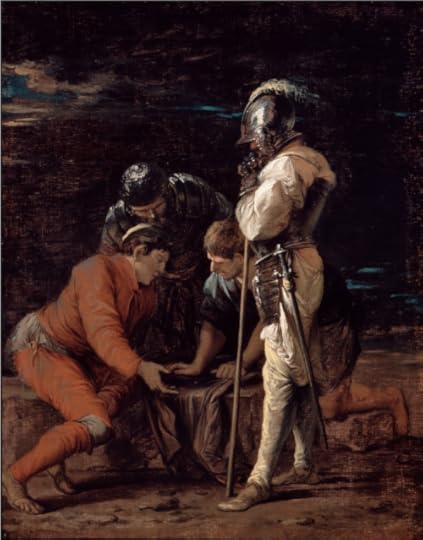
Soldiers Gambling
Probably 1656-8
oil on panel
61 x 77 cm.
Salvator Rosa Dulwich Picture Gallery, London
https://www.dulwichpicturegallery.org...
 Valentin de Boulogne
Valentin de Boulogne(1591 - 1632)
Valentin de Boulogne, sometimes referred to as Le Valentin, was a French painter in the tenebrist style. His father, also named Valentin, and his uncle Jean were both painters. Valentin had success with a type of composition invented by Caravaggio in which fortune tellers, drinkers, or gamblers are grouped around a table. Valentin himself was fond of carousing and fine wine. Approximately 75 of his works survive. Valentin's genius shows in the subtleness of psychological expression and interplay among his characters, as well as in the refinement and finesse of his painting technique.
https://en.wikipedia.org/wiki/Valenti...

Soldiers Playing Cards and Dice (The Cheats)
c. 1618/1620
Oil on canvas
121 x 152 cm
National Gallery of Art, Washington
https://www.nga.gov/artworks/107315-s...
 Arsen Levonee
Arsen Levonee(1978)
Arsen Levonee is a Russian artist born in Armenia, living in Moscow.
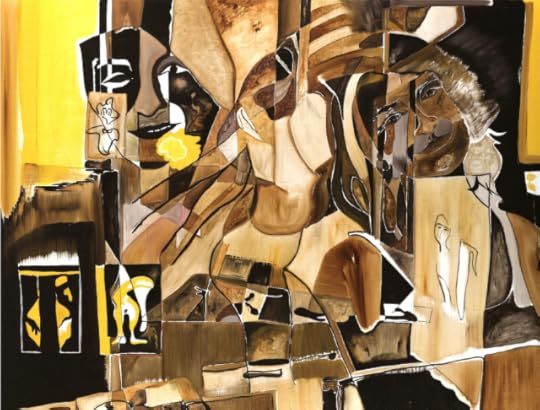
Marcel Duchamp and Arsen Levonee Playing Chess
2015
120 x 95 cm
Oil on canvas
Museum of Fine Arts in Peredelkino, Moscow
Marcel Duchamp often played chess with the composer John Cage. Even though Duchamp and I live in different historical eras, I nevertheless allowed myself to play a game of chess with him. This entire game is a metaphor embodied in my series of paintings.
Arsen Levonee
 Eduard Charlemont
Eduard Charlemont(1848- 1906)
Eduard Charlemont was an Austrian painter.
After graduating from the Academy of Fine Arts Vienna, Charlemont traveled to many countries in central Europe and finally settled in Paris, where he lived for the next thirty years. In Paris, several times he won the first prize of the Paris Salon, an annual exhibition held by the French Academy of Fine Arts (French: Académie des Beaux-Arts). The most famous work of Charlemont is The Guardian of the Seraglio, widely known as The Moorish Chief, depicting a Moorish swordsman guarding a seraglio (part of a typical wealthy Arabic villa, where women stayed when strangers entered the house).
https://en.wikipedia.org/wiki/Eduard_...
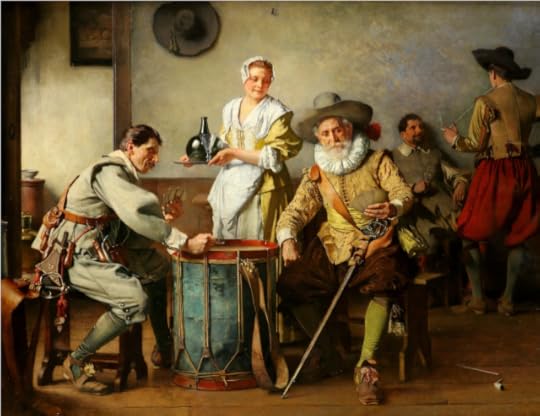
Card players
Oil on wood
41.5 x 54 cm
Regional Gallery in Liberec, Czechia
 Anna Palm de Rosa
Anna Palm de Rosa 1859 - 1924)
Anna Sofia Palm de Rosa was a Swedish artist and landscape painter. In the 1890s she became one of Sweden's most popular painters with her watercolours of steamers and sailing ships and scenes of Stockholm. She also painted a memorable picture of a game of cards in Skagen's Brøndums Hotel while she spent a summer with the Skagen Painters. At the age of 36, Anna Palm left Sweden for good, spending the rest of her life in the south of Italy, where she married an infantry officer.
https://en.wikipedia.org/wiki/Anna_Pa...
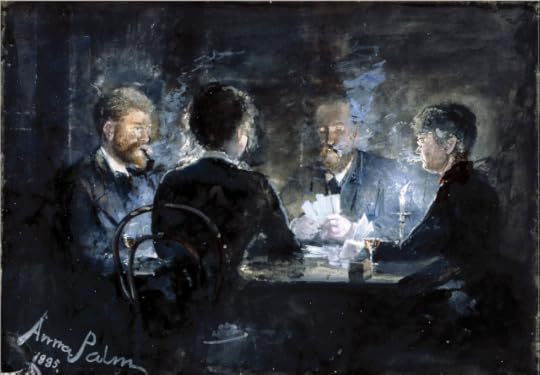
A game of L'hombre in Brøndum's Hotel
1885
Gouache on paper on canvas
52.4 x 35.6 cm
Skagens Museum, Skagen Denmark
 Angelica Kauffman
Angelica Kauffman(1741- 1807)
Maria Anna Angelika Kauffmann RA, usually known in English as Angelica Kauffman, was a Swiss Neoclassical painter who had a successful career in London and Rome. Remembered primarily as a history painter, Kauffman was a skilled portraitist, landscape and decoration painter. She was, along with Mary Moser, one of two female painters among the founding members of the Royal Academy in London in 1768.
https://en.wikipedia.org/wiki/Angelic...

Composition
1778-80
Oil on canvas
126 x 148 cm
Royal Academy of Arts
https://www.royalacademy.org.uk/art-a...
This painting representing Composition is part of a set of the four 'Elements of Art' commissioned from Kauffman by the Royal Academy to decorate the ceiling of the Royal Academy's new Council Chamber in Somerset House which opened in 1780. The Elements comprise the four fundamental stages of creating an artwork: Invention, Design, Composition and Colouring.

